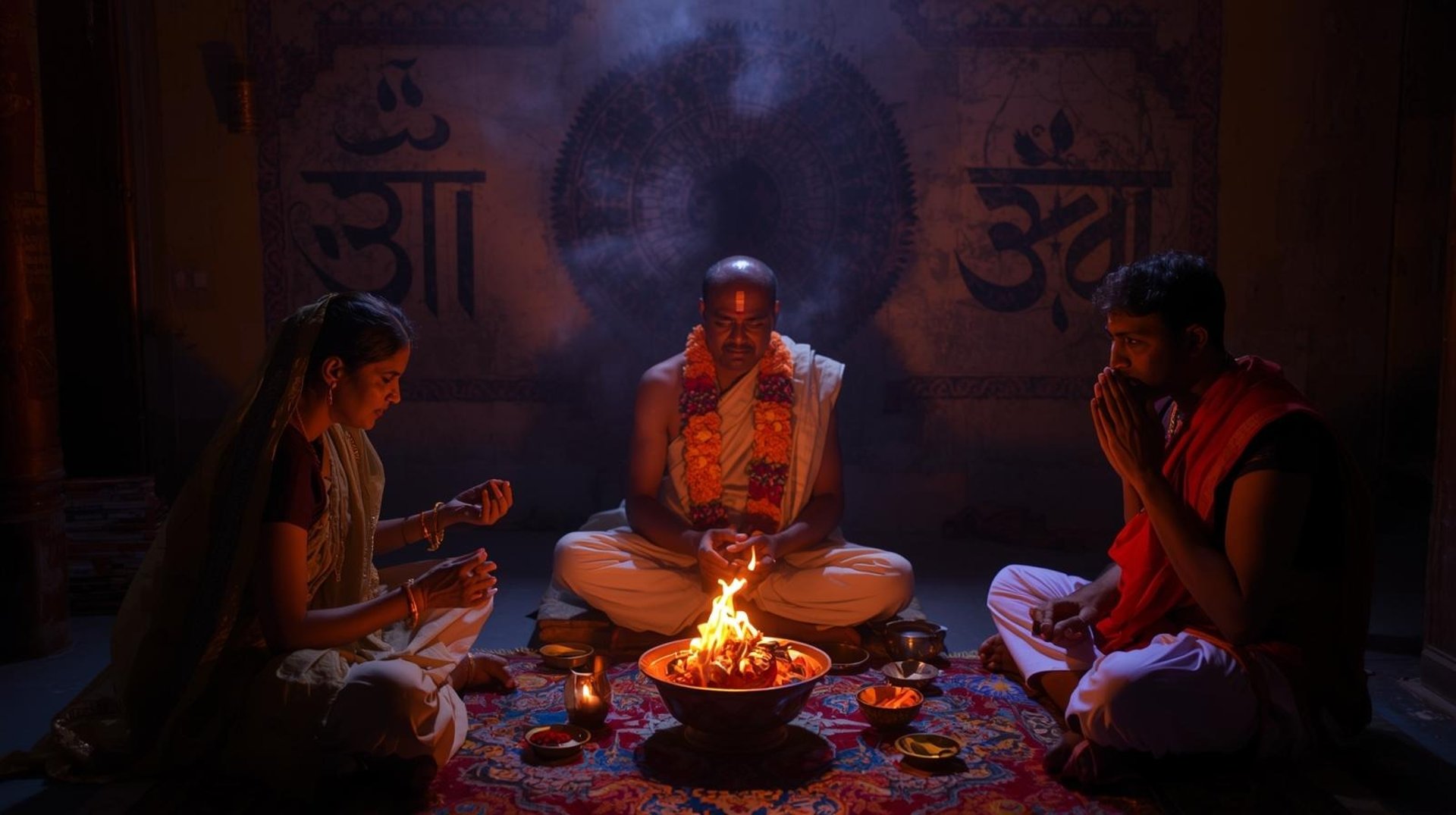
Kaal Sarp Dosh Nivaran
The Kaal Sarp Dosh (काल सर्प दोष) is a concept in Vedic astrology (Jyotish) believed to occur when all seven major planets — Sun, Moon, Mars, Mercury, Jupiter, Venus, and Saturn — are positioned between Rahu (the north lunar node) and Ketu (the south lunar node) in a person’s birth chart (kundli).
This alignment is thought to create a “serpent’s grip” (kaal = time, sarp = serpent), symbolizing karmic imbalance or ancestral disturbances that may cause challenges in life.
Meaning
Kaal → Time or fate
Sarp → Serpent (symbolizing Rahu and Ketu)
Dosh → Defect or imbalance
So, Kaal Sarp Dosh means a fault or karmic pattern created by the serpent of time, binding a person’s destiny until it’s rectified through spiritual remedies.
Believed Effects of Kaal Sarp Dosh
Astrologically, this dosh is said to bring:
Delays or obstacles in career, marriage, or finances
Health issues and emotional instability
Sudden losses or recurring bad luck
Disturbances from ancestral karma (pitru dosha)
Sleep problems, fear, or anxiety
Note: Effects vary depending on the placement of Rahu-Ketu and the strength of other planets.
Many modern astrologers also caution that not everyone with this yoga suffers negatively — it depends on the entire chart.
Types of Kaal Sarp Dosh
There are 12 main types, based on the specific position of Rahu and Ketu, such as:
Anant Kaal Sarp Dosh – Rahu in 1st house, Ketu in 7th
Kulik Kaal Sarp Dosh – Rahu in 2nd house, Ketu in 8th
Vasuki Kaal Sarp Dosh – Rahu in 3rd house, Ketu in 9th
... and so on, up toSheshnag Kaal Sarp Dosh – Rahu in 12th house, Ketu in 6th
Each type represents a specific area of life affected — health, relationships, career, etc.
Rituals & Remedies (Kaal Sarp Dosh Nivaran Puja)
To neutralize or balance the effects, Kaal Sarp Dosh Nivaran Puja is performed by learned priests.
Main Ritual Components
Sankalp (Vow): The devotee declares intent to remove the dosh.
Rahu-Ketu Shanti: Special mantras and offerings are made to pacify Rahu and Ketu.
Pind Daan & Tarpan: Offerings to ancestors to remove any pitru dosha connection.
Rudra Abhishek: Holy bathing of the Shiva Linga with milk, honey, and water while chanting Mahamrityunjaya Mantra.
Nag Puja: Worship of serpent deities (especially Anant Nag, Vasuki, and Takshak).
Havan (Fire Ritual): Offering sacred materials into fire to purify karmic energy.
Charity & Feeding: Donations of food, clothes, and grains to Brahmins and the poor, and feeding of birds and cows.
Famous Places for Kaal Sarp Dosh Puja
Some temples and locations are considered especially potent for this ritual:
Temple / Place Location Significance Trimbakeshwar Temple Nashik, Maharashtra Most renowned site for Kaal Sarp Puja; thousands perform it yearly. Mahakaleshwar Temple Ujjain, Madhya Pradesh Associated with Lord Shiva, who removes Rahu-Ketu afflictions. Kalahasti Temple Srikalahasti, Andhra Pradesh Dedicated to Rahu and Ketu; pujas are performed even during eclipses. Omkareshwar Madhya Pradesh Another Jyotirlinga where the ritual is done with Rudra Abhishek.
Mantras Commonly Chanted
Mahamrityunjaya Mantra:
“Om Tryambakam Yajamahe Sugandhim Pushtivardhanam…”Rahu Beej Mantra:
“Om Bhram Bhreem Bhroum Sah Rahave Namah”Ketu Beej Mantra:
“Om Sraam Sreem Sroum Sah Ketave Namah”
These are recited with devotion (usually 108 or 1100 times) to reduce planetary malefic effects.
Spiritual Significance
The ritual doesn’t just “cancel” astrological influences — it symbolizes:
Facing and cleansing one’s karmic patterns
Honoring ancestors and balancing past deeds
Surrendering to divine order and time (Kaal)
It’s essentially a spiritual purification to restore harmony between destiny, karma, and effort.
Would you like me to describe the exact step-by-step process of the Kaal Sarp Dosh Puja as done at Trimbakeshwar Temple (including time, items needed, and procedure)?